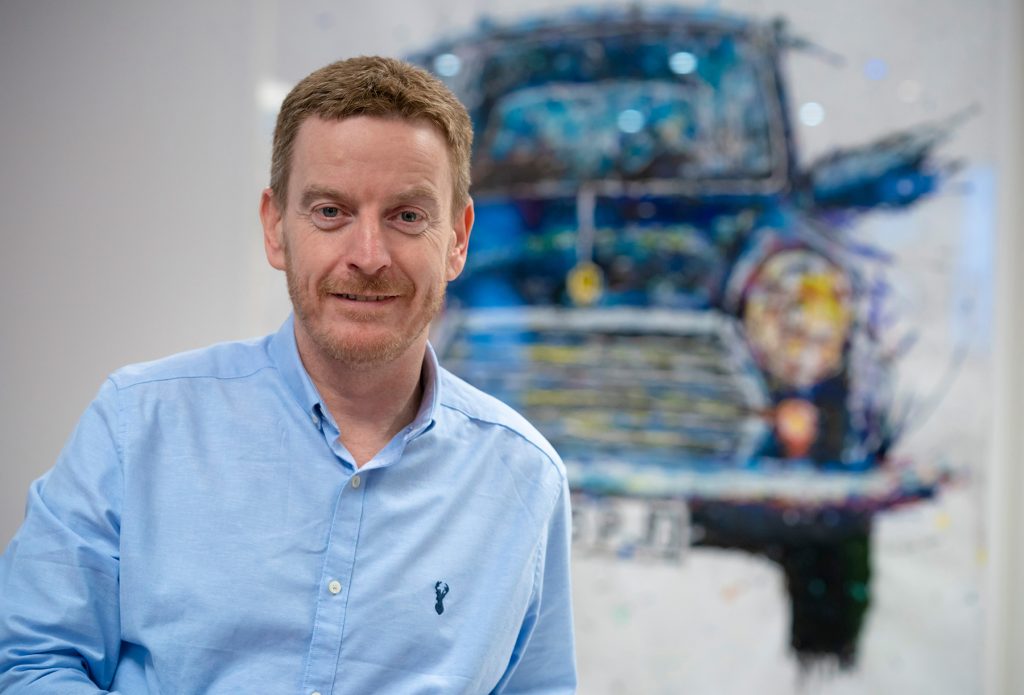Language
You can read the magazine in one of the following languages
Carl Ennis may be a top leader at one of the world’s best-known companies, but he has little interest in being a celebrity CEO. As the CEO of the Great Britain and Ireland division of German manufacturing and technology giant Siemens for the past two years, he has prioritised team performance and a more hands-off approach.
“There are some very charismatic and very visible CEOs,” Carl says. “But I’m not keen on that, if I’m completely honest; we don’t need the brand of the CEO. We have the best brand going. What we need is a team of experts to be able to deliver on the promises of that brand, and I think we have that.”
His preference for leading from the back has its seed in something he was told at the start of his career. “I guess the best piece of advice I got was that to be a successful leader, there are two styles,” Carl says. “You can lead from the front or you can shepherd from behind. I actually find that the shepherding style is really, really powerful.”
“You can lead from the front or you can shepherd from behind. I actually find that the shepherding style is really, really powerful.”
At the time, Carl recalls that he was putting too much energy into being at the forefront of every decision and not enough into giving his team the space it needed to learn and succeed. “Hearing that advice was an opportunity to really balance those things,” he says. Now, with a global team of experts at his disposal at Siemens, he puts that lesson into practice every day.
“I keep close enough so that I can see whether or not the direction is roughly what I would hope for, and I interject if I think a little bit of coaching or slight alteration in direction is required,” Carl says. “But I’m not a micromanager, because I don’t like detail.”
Carl’s journey to becoming a top C-suite executive was atypical. He started his career in engineering, leaving school at the age of 16 for an apprenticeship before eventually going on to complete an engineering degree with the help of his employer at the time.
“Then I realised I was enjoying leading a team of engineers perhaps more than I was enjoying the engineering itself,” he recalls. “I was in just the right place at the right time on a number of occasions, and found myself joining Siemens back in 1997.”
Since then, he has worked across numerous parts of the company and gained exposure to various markets, most notably with a four-year posting in Shanghai, where he was responsible for the Asia–Pacific region.

“We’re more than a good average – we actually have some excellent technologies, excellent people and an excellent understanding of how to deploy technology with real purpose.”
Being responsible for so many different countries helped Carl appreciate what it means to talk about company culture in an organisation as large as Siemens, which employs more than 300,000 people around the world and, in 2020, had a turnover of about €62.3 billion.
“It’s exceedingly difficult in an organisation of this size to create an individual culture,” he says. “But those individual cultures and behaviours, as long as they are supportive of the overall strategy, they can be different and exist in harmony.”
Over the past few years Siemens has been on a journey to update the way it is perceived globally. The company has traditionally been seen by shareholders as an all-rounder – a staid and sensible German conglomerate with a more conservative approach.
“We felt that the value of our organisation was not being fairly portrayed,” Carl says. “We’re more than a good average – we actually have some excellent technologies, excellent people and an excellent understanding of how to deploy technology with real purpose.”
Many consumers know Siemens for its home appliances, such as dishwashers, refrigerators and ovens. The company also has a strong presence in healthcare technology, where it supplies advanced CT scanners, testing kits for various diseases and IT infrastructure.
Perhaps less well known by the general public is the fact that many of Siemens’s solutions come from working with businesses that have specific problems they need the company’s ingenuity and expertise to solve.
“Often, the end customer can’t go down the shopping list and say, ‘I need three of those and four of those.’ All he knows is that he’s got a problem and he wants to speak to an organisation that can help him fix it,” Carl says. “It’s not always our goal at Siemens to be the ultimate inventor. Often, it’s our goal to be able to take that invention and apply it to real-world environments.”
“The application of our technology can really help with societal problems, whether it be decarbonisation or urbanisation or ageing demographics.We’re not just using technology for technology’s sake.”
In that vein, the company is also establishing itself as a digital innovator, working on smart solutions in education, urban infrastructure, industry, transport and energy. It is also positioning itself as a leader in decarbonisation.
A key challenge, Carl says, has been to communicate Siemens’s evolving identity without undermining the value of its globally recognised brand. “The brand is great, because it has been here for 170 years,” he says. “It’s been built by all of my predecessors and not by one individual. So we have spent quite some time over the past few years tweaking the perception of the brand to show that we’re an organisation that is really digitally enabled.

“Have we moved it far enough? I don’t know. Perhaps not enough yet. But we’re very careful when we’re doing anything with that heritage of the brand that we don’t break anything.”
With the help of numerous brand surveys, conducted both in the UK and globally, Carl and his team have been able to confirm that their efforts to adjust the perception of the brand have paid off.
Stakeholders reported that they still viewed Siemens as a stable brand with a reputation for high quality, but also as one that means ingenuity and innovation and has a sense of purpose.
“The application of our technology can really help with societal problems, whether it be decarbonisation or urbanisation or ageing demographics,” Carl says. “We’re not just using technology for technology’s sake.”
Siemens is supporting the transition away from carbon-emitting energy sources by producing various technologies, including gas turbines from Siemens Energy that can be successively converted to run on hydrogen, as well as transition technologies that improve energy efficiency.
But the company is also engaging in the energy transition by making its voice heard by policymakers, with the aim of showing governments the role that the private sector has to play in decarbonisation. The company has even released a white paper outlining political drivers for decarbonisation and detailing steps companies can take to decarbonise.
“What we have been doing is to support governments, both national and local, to organise themselves to be able to deliver a green future,” Carl says. “Even though we’re a technology company, I’m going to say decarbonisation isn’t really a technology challenge, because we know how to do this.”
“Even though we’re a technology company, I’m going to say decarbonisation isn’t really a technology challenge, because we know how to do this.”
That kind of engagement is partly about staying ahead of the curve, positioning Siemens to be ready for inevitable change rather than merely react to it. The company invests about three to four per cent of its global turnover into research and development for the same reason.
“We allow our people time to think about what the future might hold to make sure we don’t get blindsided by something we didn’t see coming, and so we can help create the markets of the future rather than react to them,” Carl says.
